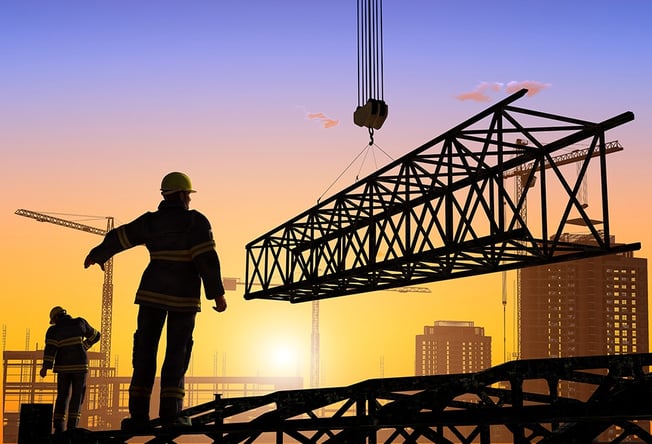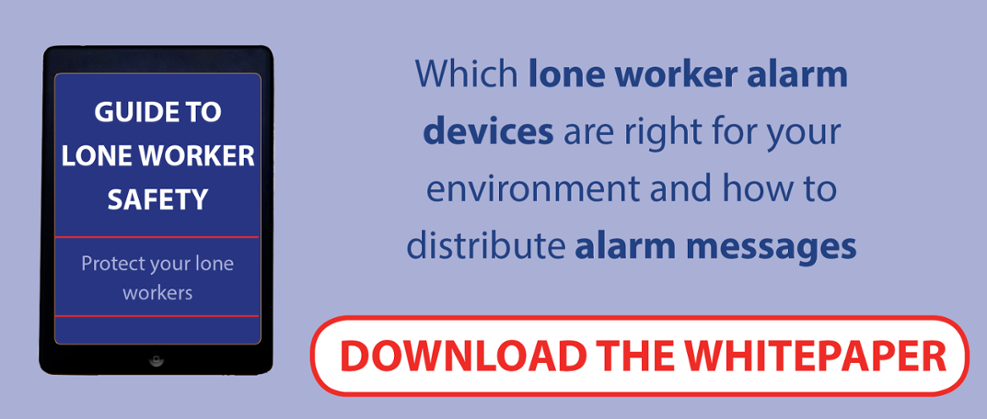
According to employment advisory service ACAS, around 14 percent of the working population (3.6 million people) report that they work shifts 'most of the time', and there is no doubt that shift work is very popular, having many advantages for both employers and employees.
It is common for maintenance workers and engineers working in manufacturing plants to work shifts, including night shift work. Inevitably, some of this work will be undertaken by employees working alone for periods lasting anywhere from a few minutes up to several hours. Lone worker safety is a high priority in most workplaces, it is vital that employers identify and deal with lone worker hazards as quickly as possible.
The problem is that maintenance workers and engineers can be at risk of being involved in a range of industrial accidents such as trips, slips, falls, electric shocks, scalds and burns. The risks to maintenance workers and engineers on night shift are not necessarily different to those employed during the day. However, night shift lone workers face particular problems because they are frequently working alone, often for extended periods of time during ‘anti-social’ hours.
Night shift staff who work in buildings, or on sites, with few or no other employees can find that there is little immediate support available if there is an accident or other emergency. This can be especially problematic during weekends and public holidays when the site or building may not be visited by colleagues for several days. This means that night shift workers carrying out maintenance and engineering duties are particularly vulnerable to lone worker hazards.
Importantly, health and safety legislation recognises the importance of lone worker safety and gives employers a legal duty to protect the health, safety and wellbeing of all of their workers, including night shift workers. Where risks to employees welfare are found, employers must ensure that any risks to workers health, safety and wellbeing are properly mitigated and managed.
There are many ways to keep your lone workers safe in the workplace. So, how does your company protect the safety and wellbeing of night shift workers, especially when they are working alone?
Well, here are 5 ways that companies can improve night shift lone worker safety and wellbeing:
1. Conduct risk assessments
As prevention is better than cure, employers should assess risks to night shift workers, especially those who spend either some, or all of their time working alone. Employees can help with this. They can advise on potential risks and the steps necessary to minimise them.
Details of an employer’s legal duties and responsibilities towards lone workers can be found in the Health and Safety at Work etc Act 1974 and the Management of Health and Safety at Work Regulations 1999. The consequences of failing in these duties can be severe and may include financial and reputational damage to the business and, in more severe cases, even imprisonment for those found to be responsible.
So, employers should assess risks to night shift workers including lone worker hazards, regularly and when there has been a significant change in working practices.
2. Provide appropriate facilities for night shift workers
Maintenance workers and engineers can find that night shift working is isolating. Workplace facilities available to daytime staff such as staff restaurants, first aid and interaction with colleagues and supervisors are not always available to night shift workers. This may impact on the wellbeing of night shift staff.
Employers can overcome this feeling of isolation by providing night staff with similar facilities and services to those available to colleagues that work during the day. This can include the provision of food heating and preparation facilities, somewhere for night shift workers to take breaks away from their workstation and employers can make arrangements for workers to access a qualified first aider, when required.
3. Support staff to look after their own health and maintain an active lifestyle
There is a growing body of evidence demonstrating that workers can sustain their level of wellbeing by adopting an active lifestyle and by looking out for signs of medical problems. Eating a healthy, balanced diet, sleeping well, taking plenty of exercise and making time to socialise also have a part to play.
However, night shift working can interfere with workers body clocks and some shift workers experience gastrointestinal disorders and cardiovascular problems. Employers have a duty of care to their night shift workers and have a range of responses ranging from providing night shift workers with a free health assessment before they take on night shift duties through to simple things like offering healthy snack options in company vending machines.
4. Mitigate the impact of fatigue
A safe working environment is vital and employers must recognise the impact of tiredness and fatigue on the health and wellbeing of night shift workers and the impact it can have on their performance. Tiredness and fatigue can impair judgement leading to errors, accidents and additional expense. This applies equally to night shift workers at those times when they are working alone. There are a number of relatively straightforward improvements that employers can put in place to mitigate the impact of fatigue and tiredness on performance. These include:
- ensuring that heating and lighting is adequate;
- making sure that the duration of rest periods between shifts are sufficient (under the Working Time Regulations 1998 (WTR) employees must have at least 11 hours rest between shifts to help them recover from fatigue);
- scheduling rest breaks during night shifts to help employees stay alert;
- introducing a rotating shift pattern with a forward shift rotation;
- scheduling the most taxing duties for times during their shift when employees are most alert;
Click here to read more about lone workers
5. Improve communication
Night shift workers who spend some, or a significant proportion of their shift working alone are particularly vulnerable and need more support than other types of workers.
Employers are legally, and morally, obligated to implement robust and reliable systems to enable communication with lone workers on night shifts when they require assistance in the event of an emergency, such as an industrial accident, intruders, assault or criminal damage.
If a night shift worker gets into difficulty while on their own the implications could be serious for both the worker and their employer. One way to mitigate the risk is to provide an effective means of alerting colleagues. This is a method of communication that can be relied upon to be just as effective whether someone is working in an isolated location on site, or operating off site, in a remote location where they cannot connect to the mobile phone network. What’s important is that the user has an easy method of triggering an alert and is confident that help will come every time an alarm is triggered, even if they are rendered unconscious.
By making careful use of modern methods to support lone workers, it is very possible to make sure that your lone workers are safe at work, and confident that there are systems in place to help them should the worst happen. Click here and download our free guide to help you get started today.





